Weber SmokeFire review: An intriguing work-in-progress
It has potential to be a backyard powerhouse, but the smart features need work.
Update 6/25/20: Since our initial review in April, Weber has released numerous firmware updates and added new features to its Connect app. These changes directly addressed several of the key concerns we had with the SmokeFire grills. You can now adjust the temperature remotely as well as initiate the shutdown cycle or SmokeBoost mode. The company made push notifications actually informative, so you’re not left wondering what just happened when you see one. The grill also preheats faster and handles temperature fluctuations more efficiently. For those reasons, we’ve updated the original score of 71 to 80. See our revised list of pros and cons below.
Weber is admittedly late to the game. The company is years behind the likes of Traeger, Pit Boss and other companies when it comes not only to pellet grills but also smart grills in general. With the SmokeFire line, Weber offers its unique spin on both. The company says it took its time and put its decades of expertise to work on its connected-cooking products and addressing the “pain points” of pellet grills. While the SmokeFire grills create insane smoke flavor and some of the features are handy, there’s still work to be done.
The SmokeFire EX4 ($999) looks like what you’d expect from a Weber pellet grill. The exterior is a mix of black enamel paint and silver accents, like the company’s gas grills. SmokeFire models have an oval, barrel-shaped chamber, not unlike recent options from Traeger. One key difference is Weber opted to put the pellet hopper around back rather than on the side. Other companies, like Rec Tec, have also done this, and the location has its advantages. Primarily, the auger path -- or the channel that feeds pellets to the fire pot -- is much shorter. That means there’s less room for a jam to stall your cook. Weber made the auger path even shorter by opting for a slide that drops the pellets to their final spot rather than a moving part that carries them the entire way.
Inside, Weber chose its trademark Flavorizer bars instead of a solid stainless steel drip tray to direct grease to a small bucket. This is both a good and bad thing. First, not having a sheet of aluminum for the smoke to meander around means your food gets a lot more direct exposure. Don’t get me wrong, I’ve never had an issue imparting flavor with other pellet grills, but what SmokeFire is capable of is a whole other level. The Flavorizer bars also heat up, since they’re metal, so when any grease hits this and smokes or sizzles, that too adds flavor to your food.
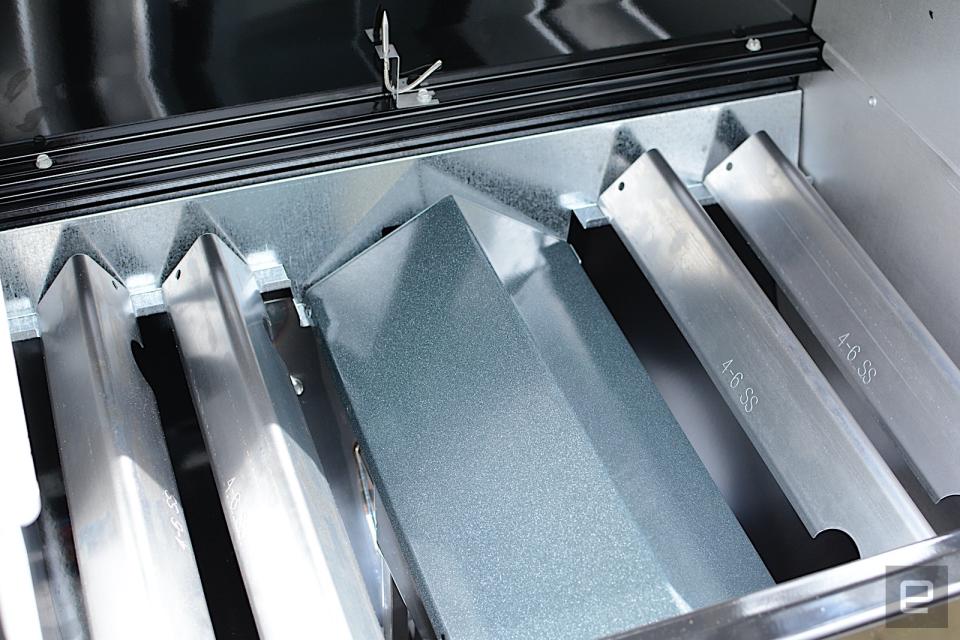
And now the bad news. Grills with those metal sheets catch all the grease from your food, directing it to a catch can that’s typically on the outside of the grill. It’s easily accessible and emptied. It’s also usually contained and insulated from the flame. The Flavorizer bars are triangular, so they direct any significant runoff to the bottom of the grill. On Weber’s SmokeFire, there’s a tray that slides out from the front with a catch pan for grease and an area for ash. The company says cleaning the grills is as easy as pushing ash through two small openings in the bottom of the cook chamber. Well, I can tell you it’s not that easy. In fact, it takes me much longer to clean the SmokeFire EX4 than it does any Traeger grill I’ve reviewed.
One reason is that there are several more pieces. The bottom grill grate is in two pieces, plus there’s the top/secondary grate. Then there are the four Flavorizer bars, the center fire-pot shield and the fire-pot cover. That’s five more parts to remove than with the Ironwood each time I vacuum it out.
I can deal with that though. The real headache is when the grease and ash mix in the bottom of the cook chamber. They combine to create a thick paste you have to scrape into the two exit holes and into the collection tray. If it were just ash, you could vacuum it out quickly and move on. This is much more time-consuming and much more frustrating.
Weber argues that gas grills require similar cleaning, and we probably don’t do it often enough. While that’s probably true, pellet grills objectively create a lot more debris than gas. The company recommends that if you want to keep the bottom of the SmokeFire from becoming a nasty grease trap, you put a disposable aluminum pan on top of the Flavorizer bars or on the bottom grate. Sure, it’s a workable solution, and I often do it on a Traeger to make cleaning up easier. However, those pans are an extra expense you’ll need to consider. I should be clear that I’ve never had an issue with a grease fire. My gripe is with the mess.
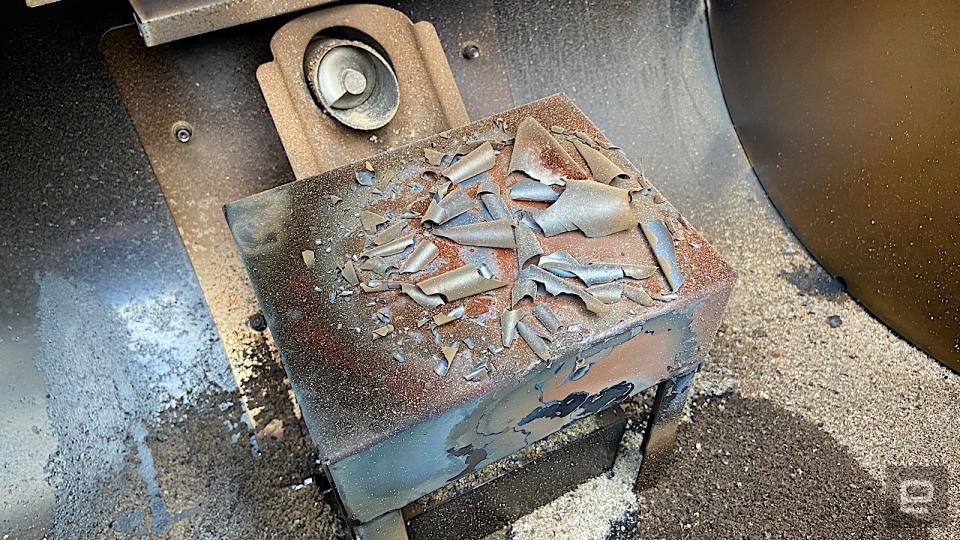
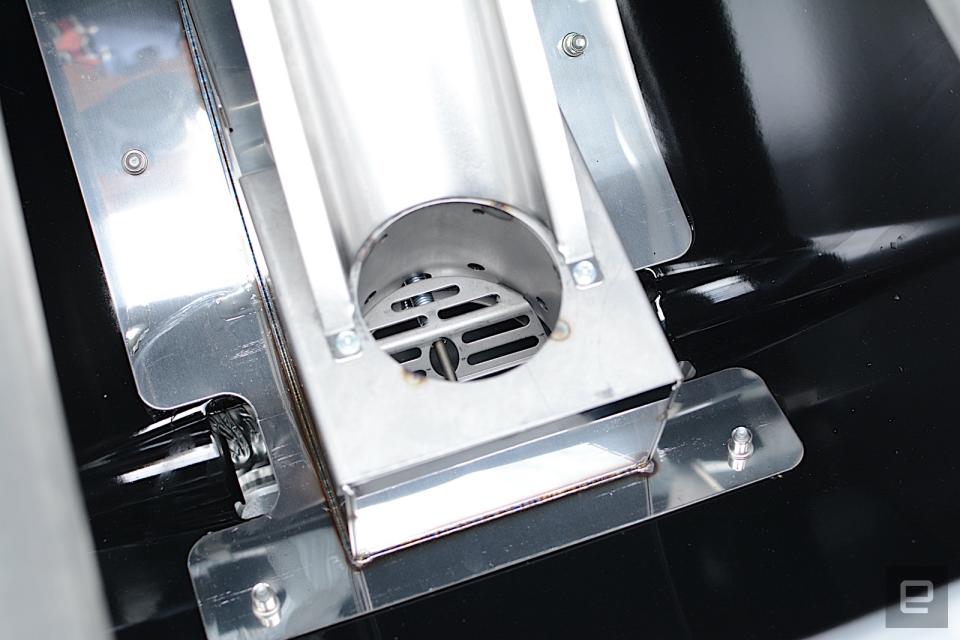
The main fire-pot shield is a metal pedestal that’s one of two guards keeping grease and other debris from going into the heat source. All pellet grills require you to “burn-in” at a high temperature for about an hour, and Weber’s SmokeFire is no different. A lot of the interior parts of these grills have oil from the factory. The first time I took apart the SmokeFire to clean it, I noticed that the pedestal was peeling on the inside directly over the fire pot and on the top. Weber said this was caused by the mix of oil, metal and high heat and that I should scrape off the chips and direct them to the cleanout bin. Still, it’s pretty alarming to see this the first time you clean a grill. If you choose to buy one of these, you should absolutely clean that pedestal thoroughly after the burn-in and before you put any food on the grill.
None of this has any impact on performance. The SmokeFire works well for both cooking pork shoulder or brisket low and slow and for searing steak hot and fast. The grill heats to 225 degrees (a common temperature for smoking) in just over nine minutes, which is on par with what I typically see on the Traeger Ironwood 650 (10-15 minutes is the norm). Impressively, the SmokeFire took less than seven minutes to go from 225 to 600 degrees for a high-temp sear. The only real issue I noticed was fluctuations in temperature at the bottom grill grate.
The main probe for monitoring ambient temperature is situated dead center above the bottom grate. It’s pointed upward, so it’s recording the temps between the lower and upper grate. To double-check the grill temperature, I used the ambient probe from Weber’s Smart Grilling Hub and plugged it into one of the four probe jacks on the SmokeFire (the built-in probe doesn’t take up one of the slots). I observed figures 10 degrees above and below the set grill temp during a 10-hour pork-shoulder-cooking session.
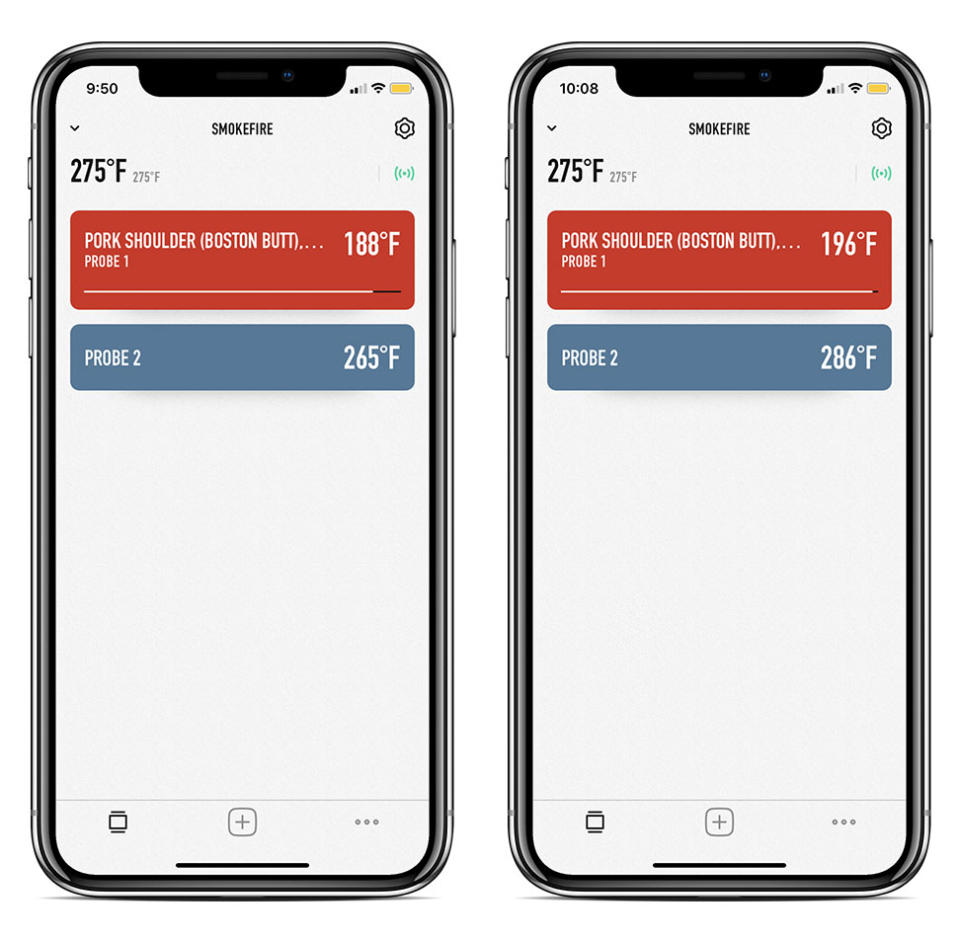
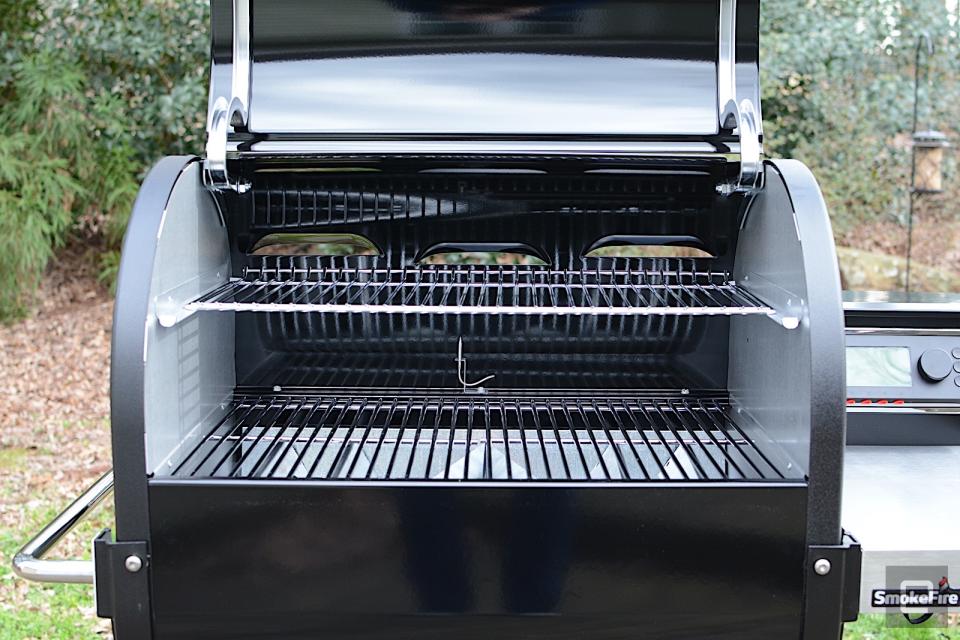
All grills fluctuate based on factors like weather and how many times you open the lid to peek, but a 20-degree swing is pretty big -- especially when I was careful only to lift the door when I had to. I’m used to seeing a five-degree variance in either direction, but 10 is the most I’ve seen. That being said, none of my cooks were extended, or shortened, by these fluctuations. Pretty much everything I prepared was finished in a timely fashion. In other words, the grill compensated for these swings, no matter how alarming they were for me as a spectator.
Weber has already addressed one issue with the SmokeFire since it went on sale: the pellet hopper. The company now offers grill owners a ramp that can be installed to reduce cavitation when the grill is in use. Basically, the pellets don’t slide toward the auger like they should. Unless you keep watch and push them toward that spot, they will eventually stop going into the feeder. The result is the grill will think it’s out of fuel when it’s really not. The add-on definitely helps with this, but it is a separate thing you have to request and install yourself. It’s free, quick and easy but still some added work on your part to coordinate it all.
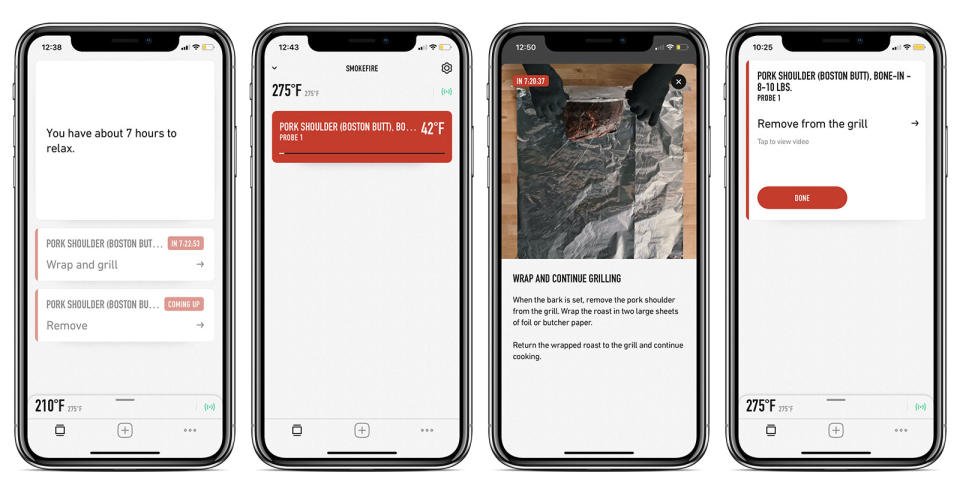
The SmokeFire grills run on Weber Connect, which is built on JuneOS -- the same software that powers June’s smart ovens. It can monitor the grill and internal food temperatures to guide your cooks. Like the Smart Grilling Hub, Weber Connect will lead you through cooking a variety of meat and seafood, from prepping to final slicing, and every step in between. The app will tell you when to complete each step, estimate how long until the next one and offer video how-tos if you need a visual aid.
You can also run Weber Connect in a more manual mode, with the target-temperature option. Here, you’re overseeing the process on your own without the step-by-step instructions. As you might expect, you can control everything on the grill itself -- including setting and adjusting temperature, timers and more. However, if you want to employ the estimated-doneness times, you’ll need to select a meat or seafood preset and send it to the grill.
Even though Weber Connect gives you a specific cooking temperature, picking a preset doesn’t send that info to the grill for you. You have to manually set it yourself before beginning the ignition process. This sounds like an inconvenience, but it’s not. No WiFi pellet grill will allow you to start it remotely, for safety reasons. Some grills, like Traeger’s, will send temperature info, but you still have to physically push the ignite button, so it’s not exactly a huge time saver.
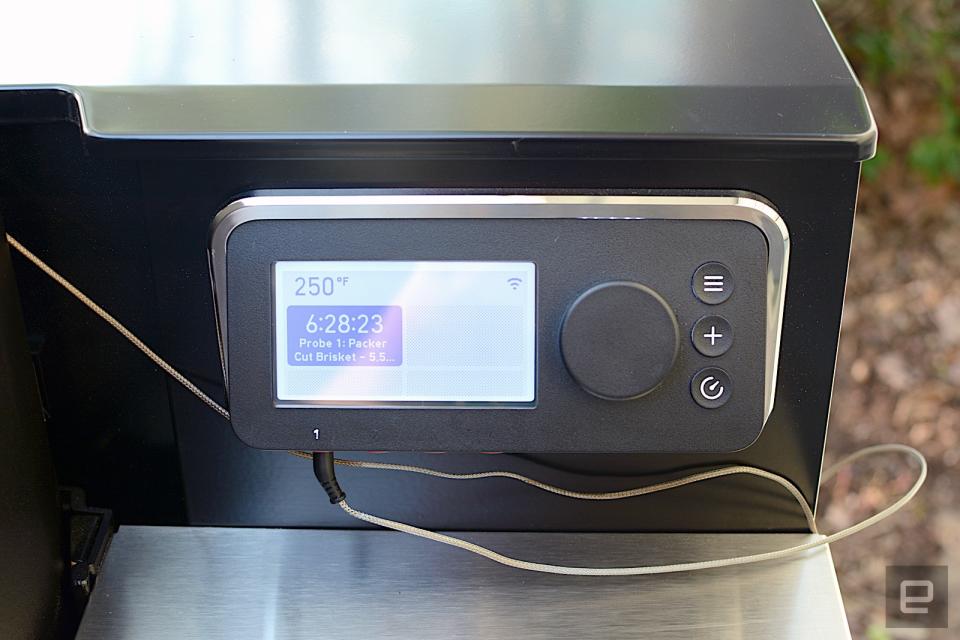
When I reviewed the Smart Grilling Hub, I didn’t have any issues with the estimated cooking times. Almost always, the time frame the device provided once the grill recovered from me putting the meat on was accurate. There were fluctuations when I’d lift the lid to check, or if there was some other environmental trigger, but both short and long cooks were finished pretty close to the initial estimate.
With the SmokeFire, that wasn’t always the case. Notifications to flip and remove quickly seared steaks were fine, but the time estimates on both of the smoking sessions that lasted eight hours or more were way off. Weber Connect said a brisket I was cooking still needed another two hours, even after it hit an internal temperature of 200 degrees. I had a similar outcome with a pork shoulder. The time estimate to wrap was also slightly off on the latter, showing an hour and a half about 20 minutes before pinging my phone that it was time to complete that step (of course I had left the house to run an errand). These time estimates can be handy for longer cooks, and they were a welcome feature on the Smart Grilling Hub. However, on the SmokeFire grill, there’s room for improvement.
Weber has pledged to do just that. The company committed to adding more cook profiles to the app on a quarterly basis. Like I mentioned in the Hub review, there are some limitations and omissions right now (specific steak cuts and pork ribs, for example). Weber Connect is also missing key SmokeFire tools like the ability to adjust the grill temperature from your phone. That’s a basic feature that nearly every other WiFi-enabled pellet grill has onboard. Weber has already pushed software updates to improve how SmokeFire runs, so I hope it can move quickly to add the temperature adjustment as well.
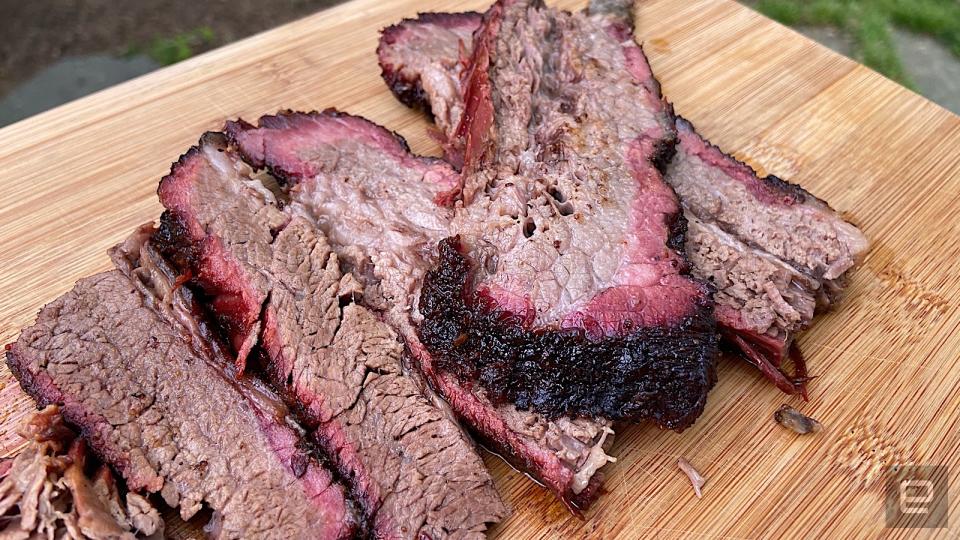
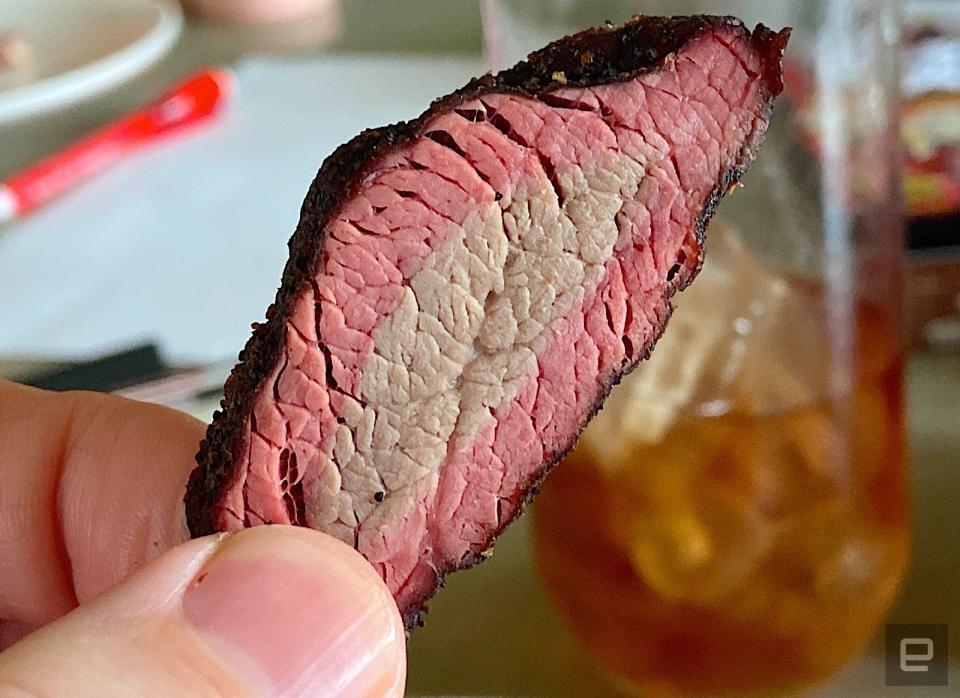
This all sounds like there’s a lot of bad with the SmokeFire. And it’s true there’s a lot of room for fixes, especially when it comes to the Weber Connect app. But even with the caveats, the SmokeFire EX4 helped me cook some insanely good meat. Everything I threw at it turned out great. From pork shoulders for pulled pork to brisket and beef ribs, the amount of smoke flavor in slow-cooked barbecue meats is simply incredible. I also reverse-seared tri-tip steaks multiple times by smoking them until they were close to the target doneness and then quickly searing the outside over high heat. The smoke ring on those steaks after just an hour is unlike anything I’ve seen on a grill like this. If getting as much smoke flavor into your food as possible is your primary goal, you won’t be disappointed here.
Despite all the good food, it’s hard to recommend the SmokeFire EX4 or the larger EX6 ($1,199) with the state of Weber Connect. I have no doubt the company will iron out the wrinkles over time, but until it does, SmokeFire isn’t quite as compelling as the Smart Grilling Hub. That’s especially true in terms of ease of use and offering aspiring pitmasters a full suite of tools. The alternatives from Pit Boss, Camp Chef, Rec Tec, Green Mountain Grills and others offer WiFi as a standard feature, and several of them will cost you less than $1,000.
Most of my pellet grill experience is with the Traeger Timberline and Ironwood series. Both of those have WiFi connectivity that allows you to monitor the grills from your living room or while you run to the store for supplies (with someone still at home in case there’s trouble, of course). The Traeger app also lets you adjust grill temperature, set timers (including a dedicated sauce timer), activate Super Smoke mode (under 250 degrees) and select a Keep Warm setting. The company also updated its app this week to include video guides and cooking tips on top of more than 1,000 recipes. Those recipes go well beyond a simple meat preset, and there are categories for sides, baked goods and even cocktails. The cheapest of these is more expensive than the priciest SmokeFire though, at $1,200. If you’re willing to give up some of the more advanced features, Traeger’s most affordable grill with WiFi is the Pro 575 at $800.
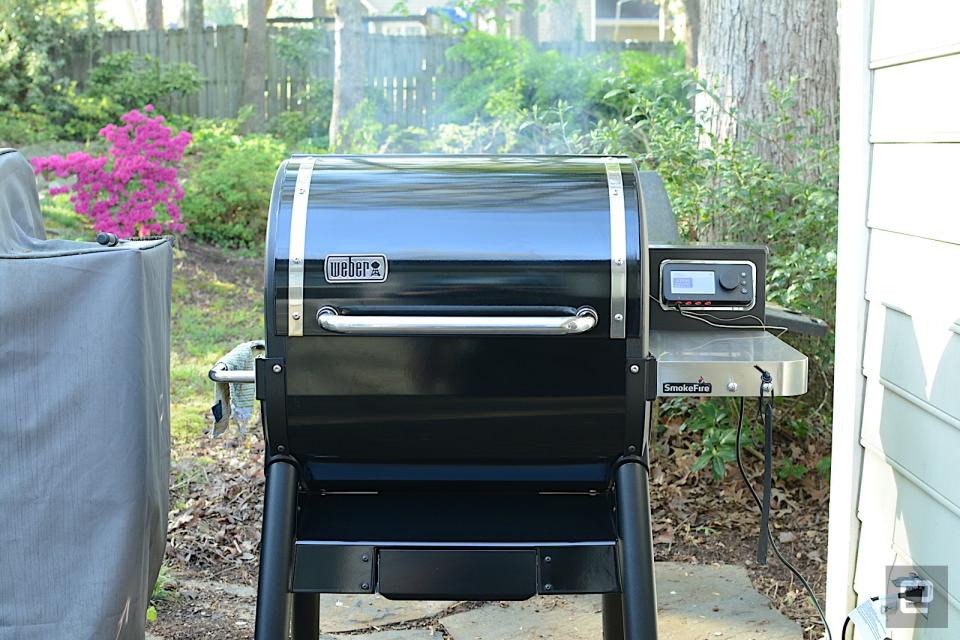
Of course, you don’t need any of these to make great food. You can set up a solid smoker with a kettle-style charcoal grill that will help you cook solid barbecue in addition to its regular high-temp function. You can easily add a remote-monitoring device like the Smart Grilling Hub or something like the ThermoWorks Smoke ($99) to give you the ability to keep tabs from a distance. A kettle grill and one of those devices will cost you around $200. WiFi pellet grills are the Bentleys of backyard barbecue. They’re nice, but most people are fine with a Ford Focus.
Weber doesn’t need to copy Traeger to make SmokeFire a complete smart grill. It already generates strong smoke flavor; it doesn’t need a Super Smoke setting. But it’s clear companies like Traeger have been at this a lot longer and have had time to iron out issues and build a versatile set of grilling tools for backyard cooks of all levels. Weber has made the first step, and SmokeFire shows a lot of promise. Now it’s time to keep tweaking and refining until it nails the basics and makes its Connect app a worthy grilling companion that works consistently with both the standalone Hub and the pellet grill. I’m looking forward to revisiting SmokeFire in the months to come, but right now it’s a machine with unrealized potential.
